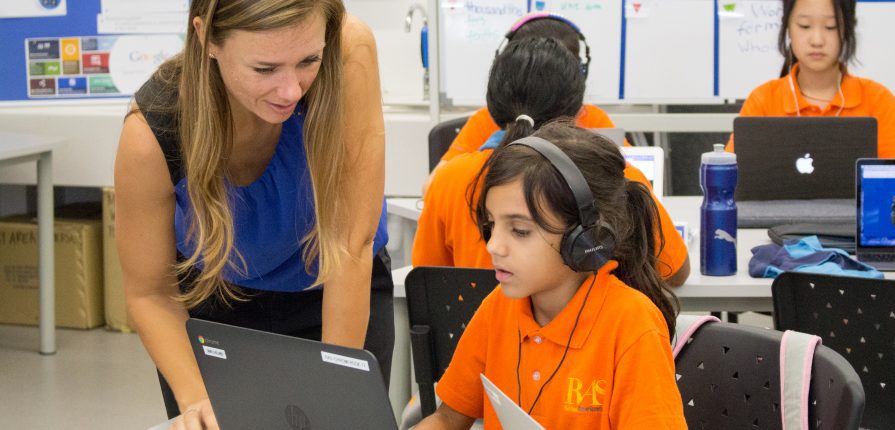Can Learning Code Help Our Students?
by Ken Morrison, Technology Integration Specialist
One of the powerful tools that secondary students use to learn how to code and prepare for the future is CodeHS. This is a tool provides options for whole-class learning as well as the ability for students to proceed at their own pace. This platform collects data from students around the world and adjusts instructional resources and pacing to keep all students engaged and successful. Learning to code helps students create algorithms that will help them understand and navigate a digital future that includes Artificial Intelligence (AI).
Students often comment on how the activities directly apply to what they are learning in their math courses. Through digital badges, engaging challenges, peer encouragement, and teacher support, students are motivated to reach the next level while also offering to help their friends work through problems. During team coding, students use all four of the RAS General Learning Outcomes. Qualitative organization and research skills are used when collecting data and problem-solving in core computer science. Students must first understand how a human solves a problem, then understand how to translate this “algorithm” into something a computer can do, and finally how to “write” the specific syntax (required by a computer) to get the job done.
Students report that they like how CodeHS helps them find their own mistakes without giving them the answers. This helps students pay attention to details without being discouraged when they make mistakes.
CodeHS helps students reach standards created by CSTA and ISTE. Raffles American School’s Technology Integration Specialist and Computer Science teacher, Mr. Morrison has flown to the USA and Hong Kong for direct training from ISTE, CSTA, and CodeHS to learn from these organizations and other computer science teachers about how to use this tool to help students prepare for the future.


